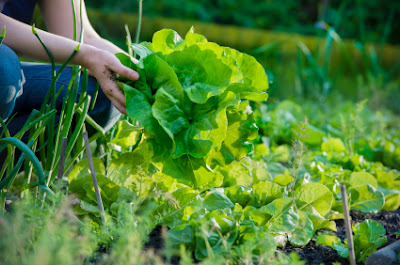How the plan comes together
Location - You will want to choose a flat, sunny spot. If you intend to grow vegetables, you'll need six to eight hours of direct sun a day. Shade problems? See if you can do a bit of tree pruning to allow more light to reach the beds.
 |
| A typical potager can be found at the rear of the house close to the back door. However, sun might dictate a different spot for your garden. Check the side and front yards for continuous sun. |
 |
| The key to creating a true French feeling for your garden is to use formal lines and clearly delineated beds which will give the plants space and dignity. |
Raised Beds - The raised beds are the work horse of this type of garden. Raised beds are essentially boxes without bottoms filled with topsoil and compost. The beds can be made from cedar or non pressure-treated fir planks (12' fir boards $15/each at homedepot.com) attached at the four corners. For efficient drainage, the beds should be at least 8 inches deep.
 |
| Line the paths with pea gravel ($5 for 50 lbs at lowes.com), brick, walking stones, grass or wood-chips. |
Perhaps what is best about a potager is that it needs minimal maintenance. And because the beds offer superb conditions, you can let your imagination run wild when it comes to choosing what to grow. Simply know your sun and shade conditions, and then plant what you love.
I ran across this lovely cookbook - Potager, Fresh Garden Cooking in the French Style. Currently available through Amazon, this is a wonderful cookbook for any gardener/cook seeking to create the freshest meals!
Until next time,
la chasse au bonheur




No comments:
Post a Comment